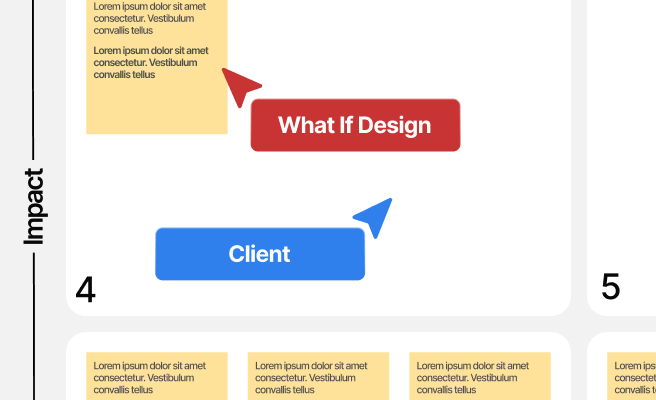Behavioral Change
<p>Behavioral change is a critical aspect in the field of product design, particularly within the realm of sustainable UX for climate tech. It involves altering users' habits, actions, or attitudes towards a more desired state, often aligning with sustainability goals and improved user experience. Understanding and leveraging behavioral change can lead to more effective products that drive user engagement and foster a positive environmental impact.</p>
<p>Historically, the concept of behavioral change has been extensively studied in psychology and behavioral science. These studies highlight the importance of triggers, routines, and rewards in shaping human behavior. In the context of product design, applying these principles can enhance user interactions and promote desirable behaviors.</p>
<h2>Importance of Behavioral Change in Product Design</h2>
<p>Behavioral change is essential in product design as it helps in achieving long-term user engagement and adoption. For instance, in climate tech, products designed to encourage sustainable practices can significantly impact environmental outcomes. By incorporating behavioral change strategies, designers can create products that not only meet users' needs but also promote eco-friendly actions.</p>
<h3>Elements of Behavioral Change</h3>
<p>Several elements play a crucial role in fostering behavioral change:</p>
<ul>
<li><strong>Triggers</strong>: These are events or stimuli that prompt users to take action. Effective design includes clear and compelling triggers that encourage the desired behavior.</li>
<li><strong>Routine</strong>: Establishing a routine helps in solidifying new behaviors. Products that seamlessly integrate into users' daily lives are more likely to succeed in driving behavioral change.</li>
<li><strong>Rewards</strong>: Providing incentives or rewards reinforces the behavior, making it more likely to be repeated. This can be in the form of gamification, social recognition, or tangible benefits.</li>
</ul>
<h3>Applying Behavioral Change Strategies</h3>
<p>There are several strategies designers can employ to facilitate behavioral change:</p>
<p><strong>1. Persuasive Design:</strong> Using psychological principles to guide users toward desired actions. For example, using social proof, like displaying testimonials or showing the number of people who have taken a particular action, can influence user behavior.</p>
<p><strong>2. Gamification:</strong> Incorporating game-like elements such as points, badges, and leaderboards to motivate users. This approach can be particularly effective in encouraging sustainable behaviors. For instance, an app designed to reduce carbon footprint might reward users with points for every eco-friendly action they take.</p>
<p><strong>3. Nudging:</strong> Subtly guiding users towards desired behaviors without restricting their choices. This can be achieved by designing default options that favor sustainable choices, such as setting double-sided printing as the default option in a printer.</p>
<p><strong>4. Feedback Loops:</strong> Providing real-time feedback to users about their actions and their impact. This can help users understand the consequences of their behavior and motivate them to make positive changes. For example, a smart thermostat might show users how much energy they are saving by adjusting their settings.</p>
<h2>Challenges in Implementing Behavioral Change</h2>
<p>Despite its benefits, implementing behavioral change in product design comes with challenges:</p>
<ul>
<li><strong>User Resistance</strong>: Users may resist changes, especially if they perceive them as inconvenient or unnecessary. Designers must ensure that the benefits of the new behavior are clear and compelling.</li>
<li><strong>Maintaining Engagement</strong>: Sustaining user engagement over time can be difficult. Continuous innovation and updates can help keep users interested and motivated.</li>
<li><strong>Ethical Considerations</strong>: Designers must balance the goal of influencing behavior with ethical considerations, ensuring that their strategies do not manipulate or exploit users.</li>
</ul>
<h3>Real-World Examples</h3>
<p>There are numerous examples of successful behavioral change strategies in product design:</p>
<p><a href="https://www.duolingo.com" style="color:#2896FF; text-decoration:underline;">Duolingo</a>: This language-learning app uses gamification to motivate users. By earning points, unlocking levels, and competing on leaderboards, users are encouraged to practice regularly.</p>
<p><a href="https://www.fitbit.com" style="color:#2896FF; text-decoration:underline;">Fitbit</a>: Fitbit devices provide real-time feedback on physical activity, encouraging users to meet their fitness goals. The app also uses social features and challenges to keep users engaged.</p>
<p><a href="https://www.opower.com" style="color:#2896FF; text-decoration:underline;">Opower</a>: This energy efficiency platform uses social proof and feedback loops to encourage users to reduce their energy consumption. By comparing their energy use to that of their neighbors, users are motivated to adopt more sustainable practices.</p>
<h2>Conclusion</h2>
<p>Behavioral change is a powerful tool in product design, particularly within the climate tech sector. By understanding and applying the principles of behavioral change, designers can create products that drive user engagement, promote sustainable practices, and ultimately contribute to a positive environmental impact. Embracing strategies such as persuasive design, gamification, nudging, and feedback loops can help overcome challenges and lead to successful user adoption and long-term behavior modification.</p>
<p>Learn more about improving your <a href="https://www.nngroup.com/articles/ten-usability-heuristics/" style="color:#2896FF; text-decoration:underline;">A/B testing strategies</a>.</p> <p>Increase user engagement that converts your demos into sales. Optimise your UX strategies with our audits.
<p>Fill out the <a href="https://tally.so/r/n97pxQ" style="color:#2896FF; text-decoration:underline;">UX Audit form</a> to get started. Ready to discuss your needs? <a href="https://cal.com/akhilak/what-if-design?duration=25" style="color:#2896FF; text-decoration:underline;">Book a consultation call</a> with us today.</p></p>

Let's scale your impact with great design.
Free consultation, no sales pitch
Thank you! Your submission has been received!
Oops! Something went wrong while submitting the form.
Let’s talk
Nothing great is built alone.
Let’s connect about your vision, our work and how we can collaborate.
Get in touch

